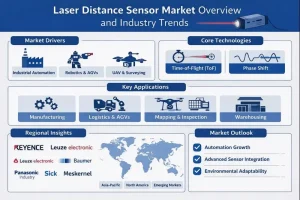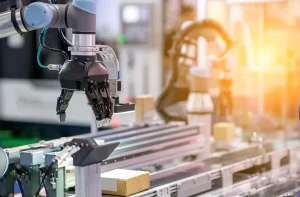New AI Model Transforms Predictive Maintenance for Industry 4.0
Predictive maintenance has long been a critical strategy for industries aiming to optimize equipment performance and reduce unplanned downtimes. The advent of a new AI model now promises to revolutionize this field by offering unprecedented accuracy and efficiency in forecasting maintenance needs. This breakthrough integrates artificial intelligence’s powerful data processing capabilities with the complexities of modern machinery, enabling businesses to stay ahead of failures and costs.
Understanding Predictive Maintenance and Its Challenges
Predictive maintenance refers to the technique of monitoring the condition of equipment during normal operation to predict when maintenance should be performed. The objective is to perform maintenance at just the right time—neither too early nor too late—to maximize machine lifespan and operational efficiency.
Traditional predictive maintenance methods rely heavily on sensor data, statistical models, and historical failure patterns. However, many industries still face challenges such as handling massive volumes of data, dealing with noisy signals, and accommodating complex interactions between machine components. These issues often limit the accuracy and reliability of predictive systems.
How the New AI Model Enhances Predictive Maintenance
The AI model at the center of this transformative development leverages cutting-edge machine learning algorithms and deep neural networks to tackle these challenges head-on. Unlike conventional models, this AI-driven solution can process vast datasets from multiple sources simultaneously, including vibration sensors, temperature readings, acoustic signals, and operational logs.
One of the standout features of the model is its ability to learn dynamic patterns and evolving behaviors of equipment over time. By continually analyzing real-time and historical data, it adapts to new conditions, identifying subtle signs of deterioration long before they escalate into critical failures. This level of predictive insight allows maintenance teams to intervene proactively.
Key Advantages of the New AI Model in Predictive Maintenance
1. Improved Accuracy and Early Detection
The AI model’s ability to sift through complex and multi-dimensional data enables it to detect anomalies with higher precision. Early detection means that issues can be resolved during scheduled maintenance windows, dramatically reducing unexpected breakdowns.
2. Cost Savings and Resource Optimization
By preventing unplanned downtime, companies save on emergency repair costs and avoid costly production halts. Additionally, maintenance can be scheduled more efficiently, optimizing the use of labor and reducing the waste associated with premature servicing.
3. Enhanced Equipment Lifespan
Timely maintenance guided by AI insights ensures that machines operate within safe stress thresholds, minimizing wear and tear. Over time, this boosts the overall lifespan of critical assets.
4. Scalability Across Industries
This AI model is not limited to a specific sector. Whether in manufacturing, energy, transportation, or utilities, the model can be customized to suit various equipment types and operational contexts, making it a versatile tool for industries worldwide.
Real-World Applications of the AI Model in Predictive Maintenance
Several organizations have already begun integrating this AI model with their existing infrastructure, yielding impressive results.
-
Manufacturing Plants: Factories equipped with the new model have reported a 30% decrease in machine downtime. The AI’s ability to anticipate component failures has helped avoid costly disruptions on production lines.
-
Energy Sector: Power plants using this model can predict rotor and turbine issues before they affect operations, enhancing grid reliability and reducing maintenance expenditures.
-
Transportation: Railway operators are utilizing the AI’s fault detection capabilities to monitor track and engine health, improving safety and scheduling maintenance more effectively.
The Road Ahead: Integrating AI Models into Future Maintenance Strategies
The emergence of this AI model marks a significant step towards fully automated and intelligent maintenance systems. As sensor technologies continue to advance and data availability expands, the model’s predictive power will only strengthen.
To fully harness these benefits, companies should focus on:
- Investing in high-quality sensor networks and data acquisition systems.
- Training staff to interpret AI-driven insights and respond swiftly.
- Combining AI predictions with domain expertise for comprehensive decision-making.
By embedding such AI models into their maintenance strategies, organizations will not only cut costs but also drive sustainability through optimized resource use and reduced waste.
Conclusion
The breakthrough AI model improving predictive maintenance brings a new era of reliability and efficiency to industries worldwide. Through early detection, cost savings, and adaptability, it offers a robust solution to long-standing challenges in equipment upkeep. As businesses seek to remain competitive in the era of Industry 4.0, embracing such AI-driven innovations will be crucial for sustainable success.




